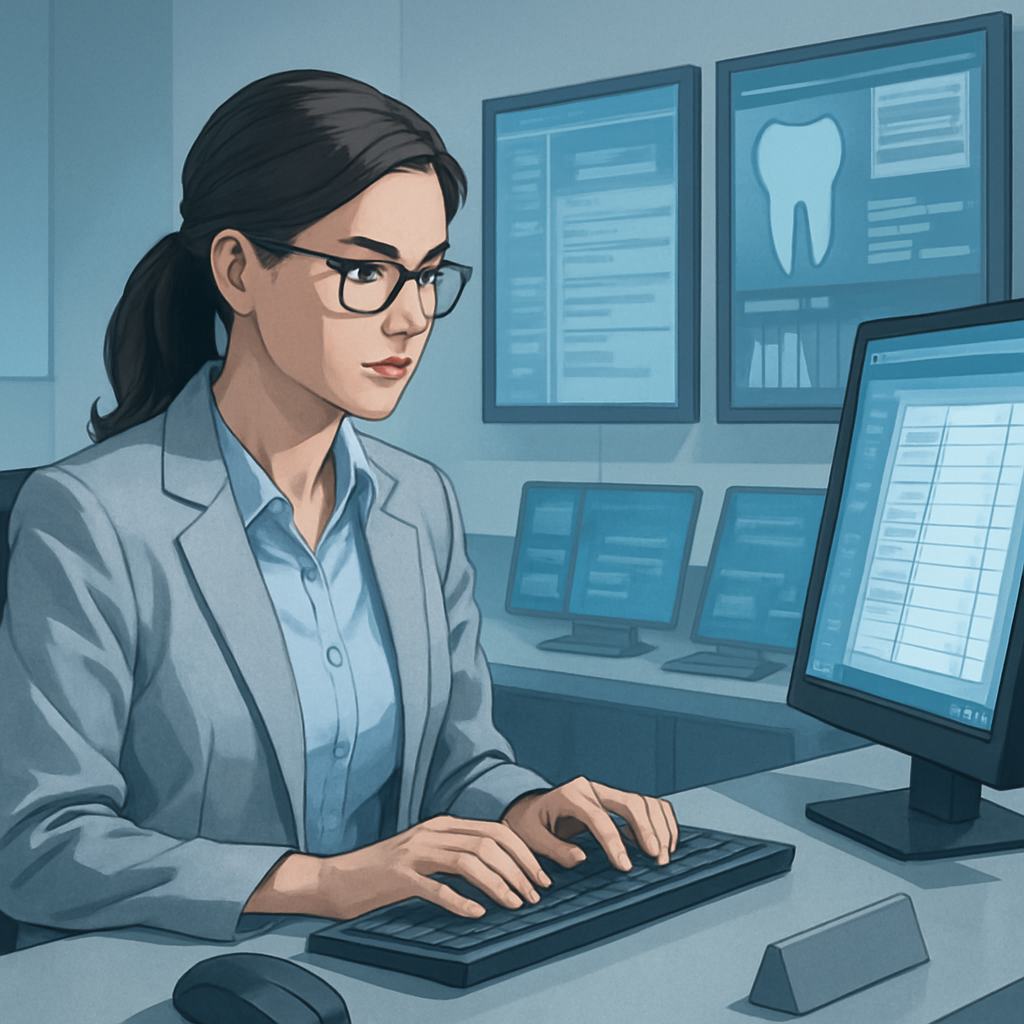November 14, 2025
7 min
Guide for multi-location dental groups to measure real ROI using defined KPIs, accurate data mapping, attribution models, cost allocation, and step-by-step methods to validate decisions.
August 27, 2025
9 minutes
DSOs cut no-shows with automated reminders via SMS, email, and calls. Multi-touch, well-timed, personalized messages boost engagement, streamline ops, protect privacy, and keep chairs full.

There’s something almost counterintuitive in modern dentistry: how practices can seem both busier than ever, and yet have empty chairs. This oddity is especially pronounced for DSOs—Dental Support Organizations—whose reason for existence is to offload the headaches dentists shouldn’t have to deal with. Their goal is to keep clinical hands focused on teeth, not paperwork or phone calls. But no-shows, when patients simply vanish from the schedule, remain a persistent drag on both the bottom line and patient care. And DSOs, being in the business of leverage, have every incentive to fix this. The arrival of automated reminders—systems that nudge patients to remember and actually show up—are an example of what happens when you think about old problems as if you were building software.
When you see dentists wrestling with no-shows, it’s obvious they’re up against the limits of attention. Automated reminders attack the problem by breaking through noise and uncertainty, delivering prompts via SMS, email, or phone calls. Rather than one tired admin dialing endlessly, you now have an army of perfectly timed digital nudgers ensuring no appointment drifts into oblivion. For DSOs built to scale, these systems are more than a fix for forgetfulness—they are levers that multiply the effectiveness of every staff member and anchor patients more firmly to their care.

What’s the workflow? It starts with scheduling—capturing everything about patient and appointment. Automation injects real-time syncing so the calendar is always correct. From there: reminders are queued to go out at optimal intervals, adjusted for channel and urgency.
The Appointment Scheduling Process
Scheduling isn’t trivial. The initial step is about getting details right, which then feed downstream reminders. The more airtight the front end, the fewer errors end up cascading.
Sending Reminders
Once set, reminders follow a schedule—texts for immediacy, emails for depth, calls for human touch. Each method catches misses the other might allow.
Customization and Personalization
Personalization isn’t just aesthetics; it’s conversion. Automated reminders should insert names, times, and prep notes, so patients notice and act.
Confirmation and Feedback
Feedback loops matter. With each message, encourage confirmation or easy rescheduling—via reply or a clickable link. That data flows back to the system, so the calendar stays truthful.
Analysis and Improvement
Don’t forget the meta-work. Practices should measure: What’s the confirmation rate? Who still slips through? The best systems use this as a feedback loop—each cycle optimizing the next.
Leveraging Technology and Human Interaction
This is Dentistry 3.0: digital systems everywhere, but applied with a craftsman’s care. The future belongs to practices where automations make the important things easier, but never crowd out the light touch that marks true service.[3]
AI's Role in Predictive Patient Engagement
The frontier: predictive AI that adapts both the schedule and the message. Imagine not just reminding a patient, but knowing (by patterns) when and how to reach out for maximum effect. That’s how you trade guesswork for real retention.[3]
Promoting Patient-Centric Technologies
True empowerment comes when patients can access their own plans and data seamlessly; where tech makes care transparent, not opaque. That’s the gold standard—trust, not just efficiency.
The agenda for DSOs is set by technology’s forward march. Where scale meets personalization is where the next wave will break: AI-driven insights and software like ConvertLens are fast turning data into smarter, more profitable, and more human practice operations.
Upcoming Trends in Patient Engagement
Expect the whole stack to become “connected care.” Mobile apps let patients manage everything; AI customizes the what, how, and when of communication. Dentistry, long a laggard in tech, is waking up.[1]
Role of AI and Automation
The real revolution is AI not just automating, but anticipating needs—proactively nudging patients in the context that makes sense for them, and surfacing trends administrators might miss. The result? More retention, less uncertainty.
Integrated Software Solutions
Single platforms, not a patchwork: ConvertLens and its ilk will offer not just reminders but analytics, funnel tracking, and campaign optimization under one roof. Decisions become data-driven, not gut-driven.
Enhancing Patient Experiences
The differentiator is experience. The practices that win will be those with low-friction apps, clear instructions, and easy self-scheduling, wrapped in communications that feel personal at scale.
There’s often reluctance to swap the old way for the new, but the case for automated reminders is overwhelming. DSOs who double down—setting up robust, personalized, well-integrated reminder systems—see fewer empty chairs, happier patients, and less staff burnout. Platforms like ConvertLens wrap analytics and AI around these reminders, pushing efficiency and growth up another notch. The future of the dental practice isn’t about chasing down patients—it’s about building a system so compelling they show up on their own.
1. How do automated reminders help reduce patient no-shows?
Automated reminders send timely notifications to patients via text, email, or phone calls, reducing the chances of them forgetting their appointments.
2. Can automated reminders be customized for different types of appointments?
Yes, automated reminders can be tailored to specific appointment types, allowing dental practices to include relevant information or instructions pertaining to each visit.
3. What is the best timing for sending automated reminders?
Typically, reminders are sent 24-48 hours before an appointment, which gives patients enough time to adjust their schedules while still being close enough to the appointment to ensure they remember.
4. Do automated reminders improve patient engagement as well?
Absolutely! By providing consistent communication, automated reminders enhance overall patient engagement and can contribute to higher satisfaction rates among patients.



Sign Up Now & Someone from Our Team Will Be in Touch Shortly!
Use the form below to send us a message, and we’ll get back to you as soon as we can.